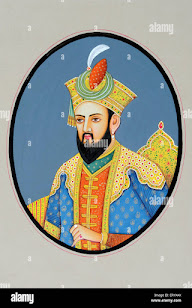The Rise of the Mongol Empire
The Mongol Empire was one of the most significant empires in world history, spanning from the 13th to the 14th century. It was a vast empire that covered much of Asia, Europe, and the Middle East. The Mongol Empire was founded by Genghis Khan in 1206, and it lasted until the 1360s. In this video, we will explore the rise and fall of the Mongol Empire.
In the early 13th century, the Mongols were a group of nomadic tribes that lived on the steppes of central Asia. They were a fierce and warlike people who excelled in horseback riding and archery. In 1206, Genghis Khan united the Mongol tribes and established a powerful empire. He quickly began to expand his territory, conquering neighboring tribes and nations.
Genghis Khan was a brilliant military strategist and a charismatic leader. He implemented a series of military reforms that made the Mongol army one of the most feared in the world. The Mongol army was highly mobile and adept at conducting lightning-fast raids. They were also experts at siege warfare, using a variety of tactics to overcome fortified cities.
By the time of Genghis Khan's death in 1227, the Mongol Empire had already expanded into China, Central Asia, and Eastern Europe. His successors continued to expand the empire, conquering the rest of China and much of the Middle East. The Mongol Empire became the largest empire in history, covering over 22% of the world's land area.
At its height, the Mongol Empire was a cosmopolitan society that brought together people from many different cultures and religions. The Mongols were tolerant of different religions and allowed their subjects to practice their own faiths. This policy of religious tolerance helped to make the Mongol Empire a prosperous and stable society.
The Mongol Empire was also an economic powerhouse. The Mongols established a vast network of trade routes known as the Silk Road, which connected Asia with Europe and the Middle East. The Silk Road brought great wealth to the Mongols, who controlled much of the trade along the route.
The Mongol Empire was also a center of learning and culture. The Mongols patronized the arts and sciences, and many great works of literature and art were produced during this time. The Mongols also developed their own unique style of art and architecture, which can still be seen today in places like Mongolia and China.
Despite its many achievements, the Mongol Empire was not immune to decline and collapse. In the mid-14th century, the empire began to fragment and weaken. Several factors contributed to its decline, including internal conflicts, the spread of disease, and the rise of powerful new states.
One of the most significant events that contributed to the decline of the Mongol Empire was the Black Death. This devastating epidemic swept through the empire in the 14th century, killing millions of people and weakening the Mongol military and economic power.
The Mongol Empire also faced challenges from powerful new states that arose in Europe and Asia. The rise of the Ottoman Empire and the Timurid Empire posed a significant threat to the Mongols. These new powers were more centralized and had better military technology than the Mongols.
The final blow to the Mongol Empire came in 1368 when the Chinese Ming Dynasty overthrew the Mongol-led Yuan Dynasty.




Comments
Post a Comment